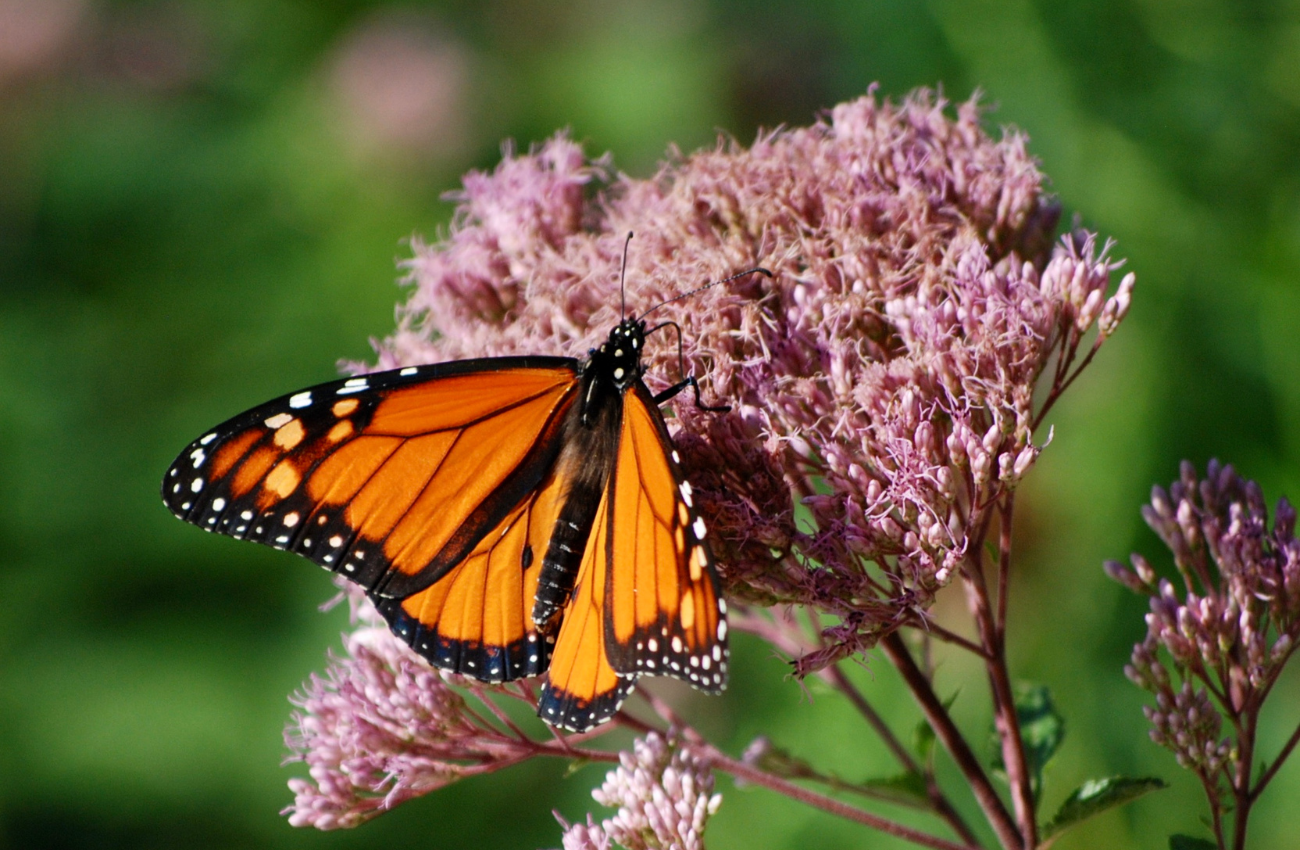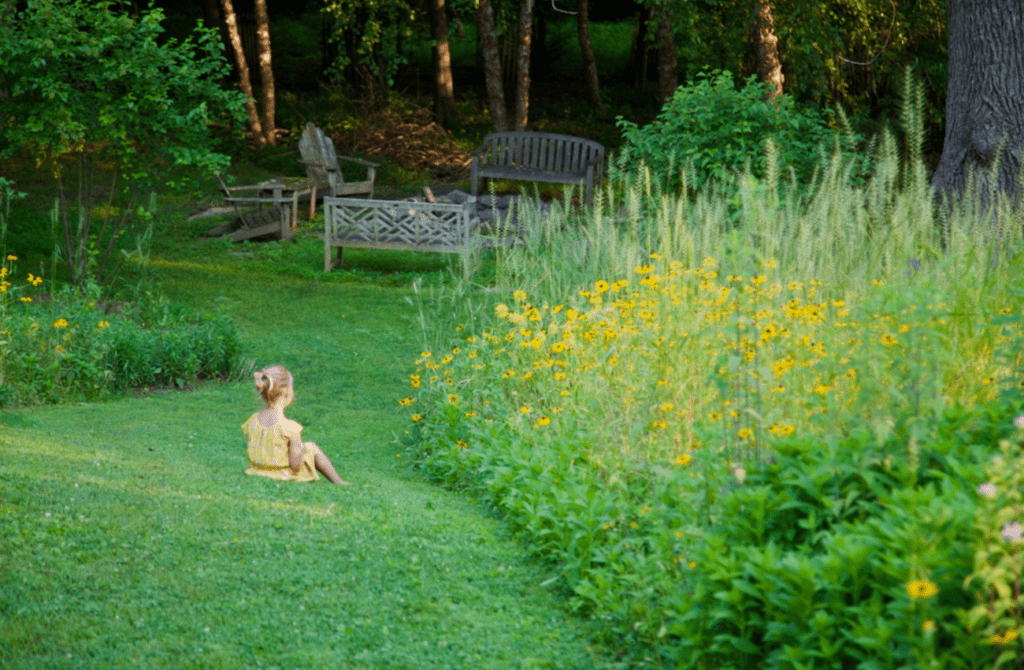Family Project: Starting a Pollinator Garden
Would you like to create a garden that attracts and supports butterflies, bees, and other pollinators? Grow the right plants and they will come

Have you ever considered planting a garden that attracts pollinators like butterflies and bees? You do not need to be a master gardener to grow a pollinator garden! All you need to get started is a little bit of sunny space, a simple garden plan, and a few native plants that are pollinator-friendly and easy to grow. Then watch the flowers grow and enjoy the butterflies and bees that come to visit. It’s sure to bring delight to the whole family—and benefit the environment too!
Why Plant a Pollinator Garden?
As you may already know, bees, butterflies and other pollinators are crucial in supporting plant and animal biodiversity in our landscapes. Many birds are pollinators too, but like other wildlife, depend on plants, flowers, seeds and insects to survive. Biodiversity is critical to a healthy ecosystem, which all creatures depend on to survive and thrive—humans too! We can help improve biodiversity by growing pollinator garden spaces. In short, adding food and habitat plants to our gardens can nurture wildlife right in our yard.
For families and kids, gardening for wildlife fosters an understanding and respect for nature and our environment. Plus it’s fun to watch the creatures in your garden!
Refugia, a design firm in Narberth whose mission is to create beautiful and ecologically beneficial landscapes, points out how kids love to engage with nature:
“Kids love insect spotting in gardens filled with buzzy and fluttery sights, sounds and smells! Whether it’s the bumble bees snoozing in the goldenrod in the early morning, or watching a monarch butterfly form its chrysalis before hatching, kids love making connections between plants and wildlife.”

Go Native
So how do you attract pollinators? The answer is to grow native wildflowers and plants that provide food and habitat. Native plants, including wildflowers are species that evolved in a particular landscape alongside insects, animals, trees and other flora. Because they are adapted to the landscape, native plants are lower maintenance and don’t require soil amendments or a watering schedule. They thrive in the region’s seasonal wet and dry conditions, and they’re perennials, so they come back again next year.
The Refugia team emphasizes the importance of native plants:
The biggest and most impactful garden choice you can make is to plant native! Climate change and the loss of biodiversity present two of our biggest environmental challenges. As homeowners, it’s our duty to garden in a way that includes rather than excludes nature; to practice conservation where we live.
If you’re a native plant newbie, visit your local garden center, browse their native, perennial plants, and talk to their gardening pros to find out what pollinator plants are available. Colonial Gardens in Phoenixville carries a good selection of perennial plants and welcomes your gardening questions. Another source are native plant sales, which have become popular events in the spring. And of course there is an abundance of information online from websites, like the Pennsylvania Native Plant Society to Facebook groups dedicated to those interested in gardening with native plants in PA and the Mid-Atlantic region.
Space to Grow
You could begin your pollinator garden journey by simply adding some native plants into your existing garden beds. Find one or more small patches of sunny ground; ideally full sun (6 hours) or part-sun (4-6 hours). If you don’t have space in your garden beds, consider creating a garden patch. Survey your yard and choose a sunny place where it would make sense visually to add a garden. For example, you could dig a small ring-shaped garden around your mailbox or a garden strip along a walkway or driveway. Start small in the first year because you can always go bigger next year.
Keep It Simple
It’s easy to get overwhelmed with garden design and plant choices when you’re first embarking on a gardening project. So keep it simple. Start your pollinator space with just a few native, pollinator-friendly plants that are easy to grow. Here is a short list of flowering plants that are native to Southeastern PA:
- Bee Balm (Monarda)
- Butterfly Weed (Asclepias Tuberosa)
- Common Milkweed (Asclepias syriaca)
- Goldenrod (Solidago)
- Joe-Pye Weed (Eupatorium Dubium)
- New England Aster (Symphyotrichum Novae-angliae)
- Purple Coneflower (Echinacea)
- Stonecrop (Sedum)

After the first year, you may decide to add more plants. But remember, start out with a simple selection of plants that you can easily tend.
A Little Bit Wild
Part of the enjoyment of a pollinator garden is that it just feels good to give back a little bit of space in your yard for wild things.
Donald Pell Gardens is a design group in Phoenixville who create immersive and naturalistic gardens and landscapes. Donald Pell believes we all could use more nature in our lives:
There is so much pleasure in engaging with nature. Anything that brings interaction with the landscape and people is a positive thing and a fulfilling experience. I think a tactile experience in the landscape—where you can see and touch and experience—are overwhelmingly needed. We belong to nature. We’re not separate.
Enabling your yard to provide food, shelter, and habitat for pollinators and wildlife is a fulfilling way to engage with nature. Before you know it, you’ll have butterflies flitting across your patio, bees busy at work around the yard, and a chorus of songbirds outside your home.
Interested in creating more wild spaces right in your own backyard? Check out these resources that inspired and informed this article!
- Nature’s Best Hope, A New Approach to Conservation that Starts in Your Yard, by Douglas Tallamy
- Refugia Design in Narberth builds functional landscapes that are ecologically beneficial, beautiful and resilient.
- Donald Pell Gardens in Phoenixville designs naturalistic gardens and landscapes in suburban Philly area. These spaces are inspired by our natural woodlands and connect to the surrounding landscape.
Lead photo of Monarch butterfly on Joe Pye Weed plant by Beth Gilbert-Crowell.





